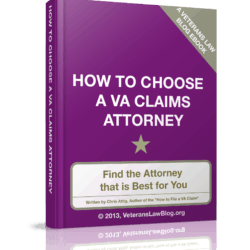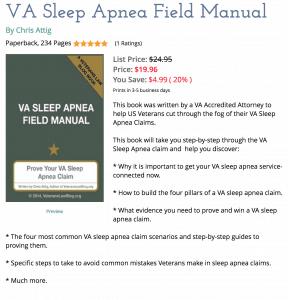Those of us that work in the world of VA Disability Benefits know that the VA has an uncanny ability to pretend the law doesn’t exist, or to ignore the law altogether.
In a recent Veterans disability benefits decision in Horn v. Shinseki (CAVC Docket No. 10-0853), the Court of Appeals for Veterans Claims (CAVC) issued a welcome ruling – making clear that its decision is not precedent, but that: “The problem has been that VA has yet to step up to its responsibility under that law and its own regulation.”
In Horn, the facts went like this. The Veteran passed his entrance physical into the military, with no indication of any hip condition or defect of the lower extremities. While in basic training, however, the Veteran was diagnosed with Legg-Perthes disease, and the military doctors recommended “Separation for Convenience of the Government.”, despite stating that the Veteran was medically fit for retention under then-current medical fitness standards.
The MEB medical report noted that the Veteran’s Legg-Perthes disease existed prior to service and was not aggravated by active duty.
The issue in this case dealt with the presumption of soundness. This legal presumption applies when a Veteran claims an injury occurred in service, and his entrance physical says that the Veteran did not have a pre-existing condition. In that case, the presumption of soundness presumes that the Veteran was in sound physical condition and that any subsequent injury is presumed to have occurred in the line of duty.
The VA can rebut the presumption of soundness, but they have to prove 2 things to do it. First, they have to produce clear and unmistakeable evidence that the entrance physical is incorrect – and that the Veteran’s condition pre-existed service. Second, the VA has to prove – by clear and unmistakeable evidence – that the condition was NOT aggravated by military service.
Confused? Think of it this way. If you enter the service, and the doctors at your MEPS station wrongly find you had no pre-existing medical conditions, the VA should only have to pay service-connected disability benefits to you if your service in the military made the condition worse. The law presumes Vets are healthy if their entrance physicals say they are healthy – but doctors make mistakes or fail to catch every problem for every enlistee. So, the VA is allowed to challenge a Veteran’s soundness at entry of military service by showing that the Veteran’s condition existed before military service and that the military service did not make the condition worse.
Here is where things get interesting: the VA routinely applies the wrong law to determine the second part of that equation – that the military service did not make the Vet’s pre-existing condition worse. They have been using the law stated in 38 USC 1153 and 38 CFR 3.306, which require that a Veteran’s injury that pre-existed service will be considered to have been aggravated by active service when there is an increase in disability during such service, unless there is a specific finding that the increase in disability is due to the natural progress of the disease.
The Court found, however, that 38 USC 1153 and 38 CFR 3.306 only apply if the Veteran’s entrance exam clearly notes the pre-existing condition. If there is no such notation on the entrance physical, the law requires that the VA prove something different. Here is what the Court said:
“…the burden is not on the claimant to show that his disability increased in severity; rather, it is on VA to establish by clear and unmistakable evidence that it did not or that any increase was due to the natural progress of the disease. Therefore, VA may not rest on the notion that the record contains insufficient evidence of aggravation. Instead, VA must rely on affirmative evidence to prove that there was no aggravation. If the Secretary fails to produce clear and unmistakable evidence of lack of aggravation, the claimant is entitled to a finding of in-service aggravation of the preexisting condition.”
That is powerful stuff – and the VA has been doing it wrong for years!
In short, what the VA has been doing is denying service connection on the ground that the Veteran has not produced sufficient evidence of aggravation of an pre-existing condition – instead, the VA should have been granting service connection if THE VA cannot provide clear and unmistakeable evidence of NO aggravation.
It’s important to note that the Horn case applies only in the aggravation prong of the presumption of soundness. The presumption of aggravation is a wholly different presumption and, in those cases, 38 USC 1153 and 38 CFR 3.306 would clearly apply.
In light of this decision, Vets should consider reopening or claiming CUE (Clear and Unmistakeable Error) in any final VA decision denying them service-connection in the following situations:
1) The Veteran did have a pre-existing condition, but it was NOT noted on the entrance physical
2) The VA denied service-connection claiming that the Veteran or the Veteran’s medical records did not contain sufficient evidence of aggravation of that pre-existing condition in service.





